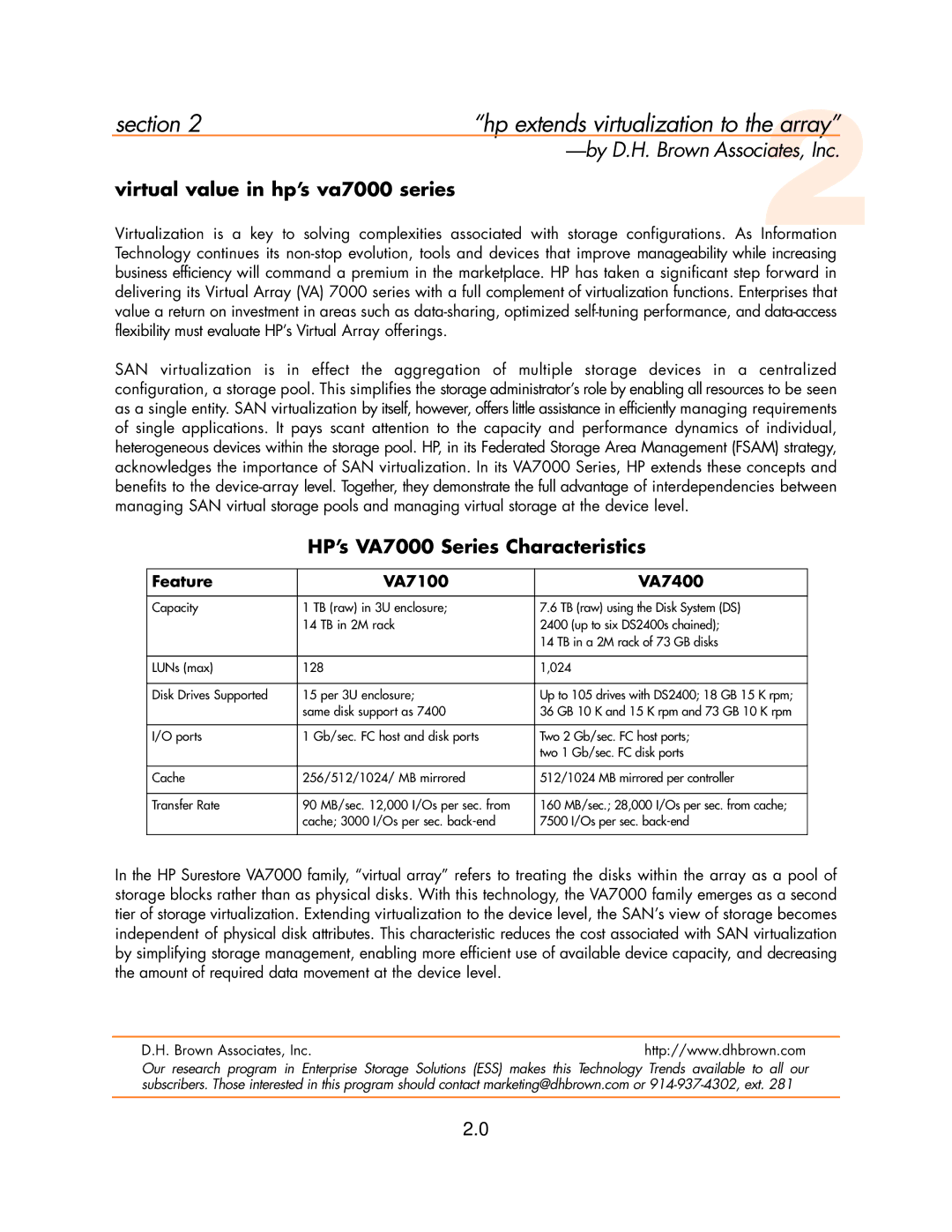section 2 | 2 | |
“hp extends virtualization to the array” | ||
| ||
virtual value in hp’s va7000 series |
|
|
Virtualization is a key to solving complexities associated with storage configurations. As Information Technology continues its
SAN virtualization is in effect the aggregation of multiple storage devices in a centralized configuration, a storage pool. This simplifies the storage administrator’s role by enabling all resources to be seen as a single entity. SAN virtualization by itself, however, offers little assistance in efficiently managing requirements of single applications. It pays scant attention to the capacity and performance dynamics of individual, heterogeneous devices within the storage pool. HP, in its Federated Storage Area Management (FSAM) strategy, acknowledges the importance of SAN virtualization. In its VA7000 Series, HP extends these concepts and benefits to the
HP’s VA7000 Series Characteristics
Feature | VA7100 | VA7400 |
|
|
|
Capacity | 1 TB (raw) in 3U enclosure; | 7.6 TB (raw) using the Disk System (DS) |
| 14 TB in 2M rack | 2400 (up to six DS2400s chained); |
|
| 14 TB in a 2M rack of 73 GB disks |
|
|
|
LUNs (max) | 128 | 1,024 |
|
|
|
Disk Drives Supported | 15 per 3U enclosure; | Up to 105 drives with DS2400; 18 GB 15 K rpm; |
| same disk support as 7400 | 36 GB 10 K and 15 K rpm and 73 GB 10 K rpm |
|
|
|
I/O ports | 1 Gb/sec. FC host and disk ports | Two 2 Gb/sec. FC host ports; |
|
| two 1 Gb/sec. FC disk ports |
|
|
|
Cache | 256/512/1024/ MB mirrored | 512/1024 MB mirrored per controller |
|
|
|
Transfer Rate | 90 MB/sec. 12,000 I/Os per sec. from | 160 MB/sec.; 28,000 I/Os per sec. from cache; |
| cache; 3000 I/Os per sec. | 7500 I/Os per sec. |
|
|
|
In the HP Surestore VA7000 family, “virtual array” refers to treating the disks within the array as a pool of storage blocks rather than as physical disks. With this technology, the VA7000 family emerges as a second tier of storage virtualization. Extending virtualization to the device level, the SAN’s view of storage becomes independent of physical disk attributes. This characteristic reduces the cost associated with SAN virtualization by simplifying storage management, enabling more efficient use of available device capacity, and decreasing the amount of required data movement at the device level.
D.H. Brown Associates, Inc. | http://www.dhbrown.com |
Our research program in Enterprise Storage Solutions (ESS) makes this Technology Trends available to all our subscribers. Those interested in this program should contact marketing@dhbrown.com or
2.0
